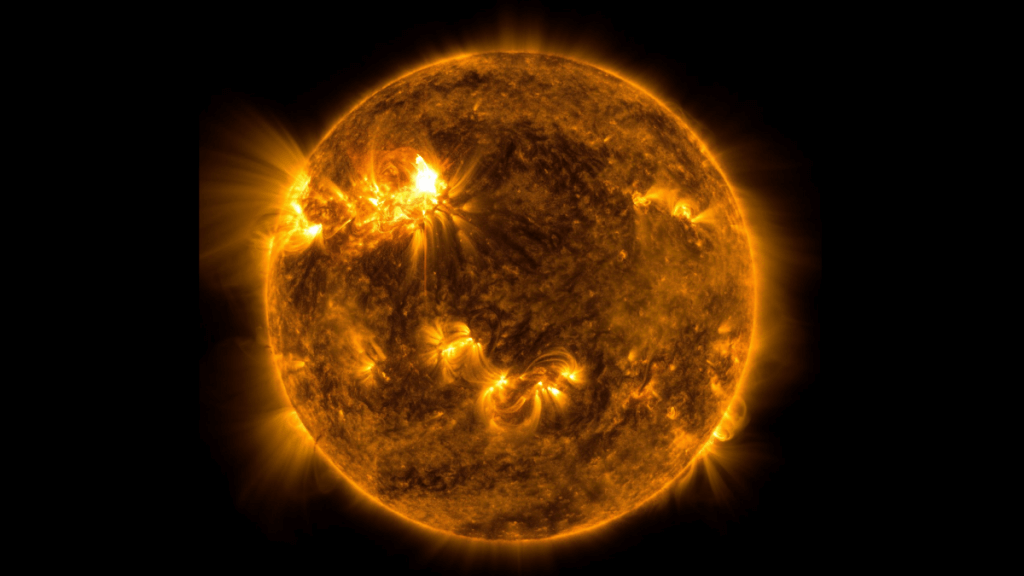
Why so much solar activity? Sun may be outpacing predictions. (Image Credit: Space.com)
It’s no coincidence that the headlines have been full of solar flares and storms: Solar cycle 25, as astronomers call it, is now well under way.
Solar activity, which space weather experts measure by the number of visible sunspots, rises and falls on a cycle that lasts roughly 11 years from minimum to minimum, although one cycle can be as short as nine years or as long as 13. The sun‘s new cycle is about two years in and should peak around 2025; although cycle 25 is expected to be stronger than its predecessor, it is still predicted to be feebler than average.
“There’s a few predictions that [cycle 25] might be strong, but we’ll wait and see,” Mark Miesch, a space weather observer at the University of Colorado Boulder, told Space.com.
Related: Another solar temper tantrum sends a strong X-class flare toward Earth
Looking at the progression of the latest trend line, cycle 25’s intensity might seem to be higher than expected. This apparently high activity is partly because the cycle began around six months earlier than scientists had anticipated — a natural difference, according to Miesch, who told Space.com that this cycle so far is still within the range of most predictions.
Current trends point to the sun having about 125 sunspots when cycle 25 peaks. That’s more than the 115 sunspots visible at the peak of cycle 24, but still much lower than the 180 of cycle 23, which peaked in March 2000 and was about middling in recorded history.
Excitingly for some, the cycle 25 peak will likely occur around the same time as the total solar eclipse of April 2024, which will be visible from an arc across North America stretching from Sinaloa in Mexico to Newfoundland in Canada. A more active sun sports a more dynamic corona, the outer atmosphere of the sun that we can see only when the moon blocks out the main disk.
“We’ll have a pretty interesting corona to see during the eclipse,” Miesch told Space.com.
In watching the sun, astronomers hope to gain more knowledge about the long-term trends that potentially drive these cycles. Even though scientists have compiled a continuous record of solar cycles back to the mid-18th century, with occasional data from well before that date, astronomers still don’t know very much about how solar cycles change and evolve over the long term.
For instance, over the past four solar cycles going back to the 1970s, each successive cycle has had a weaker peak than its predecessor.
“It’s not very common to have a trend last more than four solar cycles,” Miesch told Space.com.
If solar cycle 25 turns out to be stronger than its predecessor, that weakening trend would end, supporting an idea called the Gleissberg cycle. This theory holds that cycles’ peaks grow stronger then weaken in a waveform that repeats every century. Indeed, the weak cycles of today seem to mimic similarly weak cycles in the early 20th and early 19th centuries, while the cycles of the mid-20th century were especially strong.
But it’s too soon for scientists to have any sort of consensus on the matter.
“You’d think we’d have a lot of data on [solar cycles], but it takes 11 years to get one data point,” Miesch told Space.com. “It makes solar cycle studies a little difficult.”
Follow us on Twitter @Spacedotcom and on Facebook.





